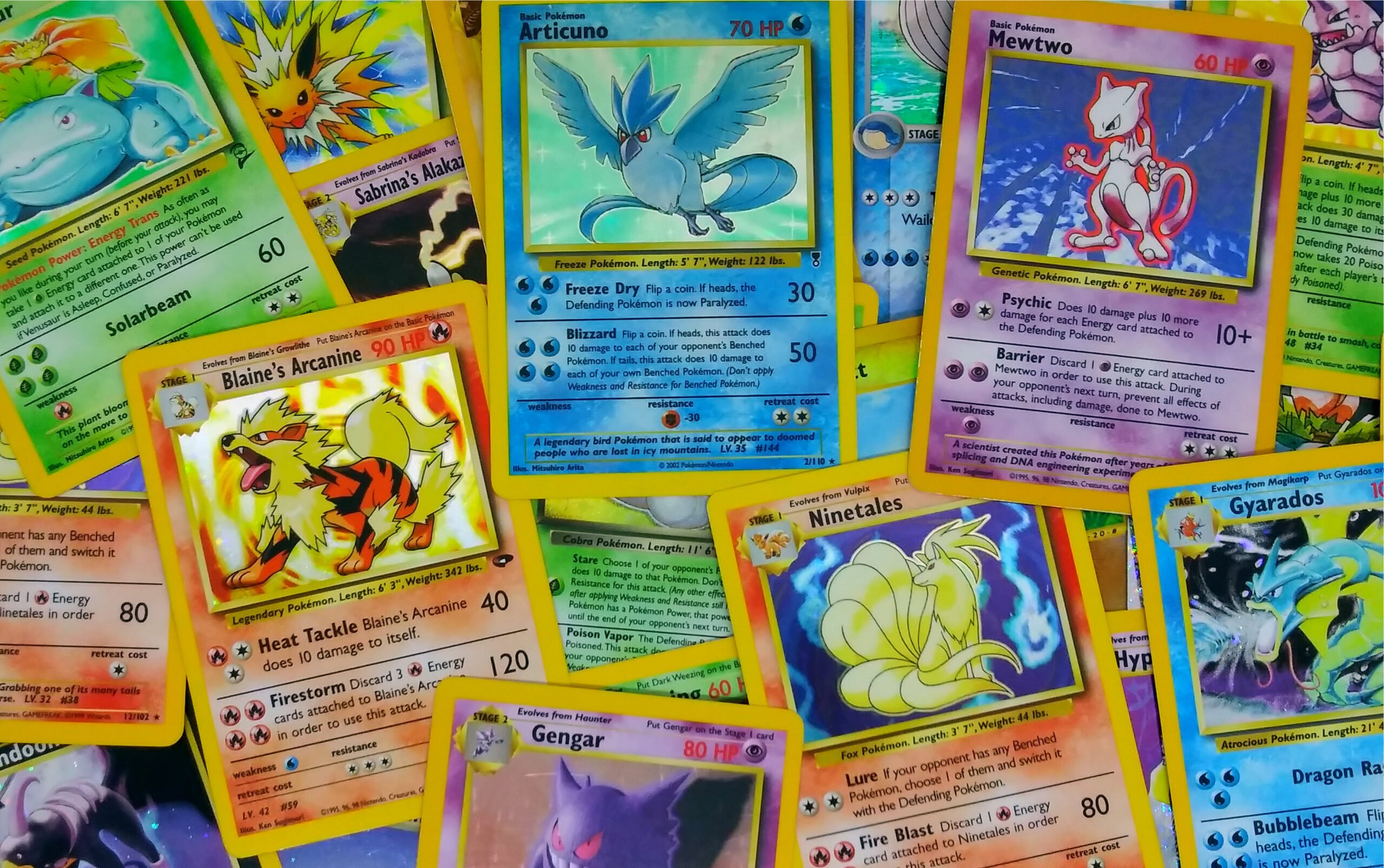Summary:
Pokémon cards are back! For those that are familiar with the card collectible craze of the early 90s and 2000s, it has never been a better time to resurface those cards. Just before you get on the phone and ask your parents where they stored away your childhood toys, games and collectibles, you probably will want to know why. What if I told you that some of these cards are now coveted due to the recent surge in price within the trading card resale market?
The Value of Pokémon Cards & Mainstream Attention
It was recently the 25th anniversary of the Pokémon Company, the Japanese brand responsible for the Trading Card Game phenomenon that continues to this day. Less than 25 years later, some of the first- edition Pokémon cards have consistently appreciated in price over the years, with some cards now skyrocketing with values in excess of $10,000 USD.
Similar to the sports trading card scene, Pokémon Cards have circulated through a consistently competitive resale and collector’s market. Dominant viral content creators such as Gary Vee and Logan Paul have both assisted in projecting the voice of the Pokémon Trading Card Game to the mainstream, which has enhanced the demand for vintage cards in their already limited supply. Logan Paul recently stole the headlines with a $2,000,000 purchase of several original Pokémon trading card boxes each containing factory sealed aluminum foil-wrapped packs of cards. Gary Vee has gone so far to draw attention to his own hunt for a particular graded and encapsulated Pokémon card and the parallels between Pokémon Cards as contemporary art. Steve Aoki, the notable electronic and dance DJ, has recently described a $420,000 purchase of an original Japanese Pikachu illustrator card as the holy grail of his Pokémon collectibles. Common to all of these individuals is the regard given for Pokémon cards as pieces of alternative investment.
Understanding the Alternative Investment
Though first edition cards can warrant immense price tags once professionally graded and authenticated by assessors such as the Professional Sports Authenticator (PSA) or the Certified Guaranty Company (CGC), the average price of Pokémon cards can vary.
The best indicator for the state of the Pokémon card market is the cost of a 1999 Holographic Shadow-less First Edition. This card represents the pinnacle of true Pokémon Trading Card Game collectibles as it can fluctuate between $150,000 USD or higher. The listing of this card on the resale market often dictates market forces surrounding the retail value for all of the other Pokémon cards. Many of us may have inadvertently picked up a common collectible in our youth. These cards are notable by the holographic foil surrounding the character art. Despite these cards being circulated frequently, some have been appraised between the $5,000-$8,000 USD mark.
Determining Value of Pokémon Cards
For those curious about how and what their Pokémon card will cost, there are a variety of resources that can help. Assessing current, past and future projections of card valuations are accessible to all. The PSA Population Report provides data on population (cards in circulation) based on data from cards that they have assessed for grading and the price data on the secondary resale market. Another resource is the website: Pokemon Price – Price Guide for PSA Graded Pokemon Cards, which also offers a graphical representation of the history of online transactions pertaining to specific cards. Taking the leap to purchase a collection of your own or cards to resell is a straightforward process. eBay is very useful tool for learning about what is currently being sought after, including the specifications of every Pokémon card ever printed and the approximate value of each.
I recently procured early release prototypes of the Pokémon Cards that were released to the Japanese public ahead of their first release in the American market. My need to purchase these for a personal collection were partly to compensate for my nostalgia of revisiting imagery from the 90s and the fact that these true collectibles are guaranteed to increase in value over time.
Entering the World of Pokémon Card Investing
The resale market is an exciting place for those new and old to the Pokémon Trading Card Game. For those thinking about starting a collection or adding value to their collection, there is one thing that you need to remember: many of these sets, decks and foil-wrapped card packs complete with factory seals went out of print many years ago. The naturally limited supply of each card type means that, as time goes on and cards become more difficult to find, the value may steadily increase. Like myself, there are others who are holding onto rare cards and thinking long term. The model is simple – holding a rare card that is in good condition for a longer period of time will potentially provide profit when a sale occurs at a later date.
If you’re not interested in starting a collection or unsure about the longevity of this collectible trade market, then I do advise that it is a great time to let go of and sell cards you may own. A quick listing on site such as eBay or Etsy is all that it takes, as the Pokémon collector community is responsive. eBay recently announced a 600% increase in Pokémon transactions across its site. The market is home to collectors both new and old and they are intent on completing their sets and obtaining every single card out there. If you have not already, I would find those cards.
Like you would with any other alternative investment strategy, there are possibilities for the market to gear toward irregularities and spiral toward a downward trend. Perhaps this current phase of Pokémon card collecting and resale is short lived? Perhaps not! Regular care and attention should be provided when making large scale Pokémon card transactions. Additionally, be wary of purchasing high ticket Pokémon items from unverified sellers on the secondary resale market. Exercise caution but most importantly have fun with it.

